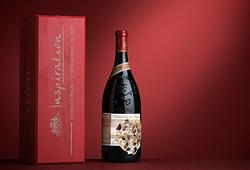Victor Vasarely
"VEGA-JAUNE"
Signed Vasarely and dated 1985 and numbered 3555 verso. Canvas 65 x 65 cm.
Alkuperä - Provenienssi
Gerschmans Konsthandel, Stockholm.
Private Collection.
Muut tiedot
Victor Vasarely's work is more relevant today than ever. The visual effects he created by painting by hand in the mid-20th century anticipated the aesthetics of today's computer games and digital art. His strong colours, undulating geometric compositions and high-contrast black-and-white paintings are now seen as timeless.
Victor Vasarely, born in 1906 in Hungary, with his innovative art focusing on contrasting colours and optical illusions, is considered to be one of the key figures behind the Opkonst movement. Taught by Láslo Moholy-Nagy, he came into contact with the work of Kandinsky, Gropius, Le Corbusier and Mondrian, as well as the functionalism of the Bauhaus, which also made a strong impression on him. In 1930 Vasarely moved to Paris where he worked successfully as a graphic designer, systematically exploring the optical and emotional range of the various graphic techniques. This led to a greater understanding of geometric form and its ability to evoke a sensory perception of space, matter and energy. Vasarely developed his own form of geometric abstraction, which he varied endlessly, creating different optical patterns with kinetic effect. He considered colour and form inseparable and geometric shapes were arranged in fluorescent colours in such a way that the eye perceived a fluctuating movement. Vasarely himself summed up this approach with the words: ‘Every form is the basis of a colour, every colour is the attribute of a form’. In this way, forms from nature were transferred into purely abstract elements in his paintings.
‘Vega-Jaune’ is one of a number of paintings the artist created in which an ordered grid seemingly swells and protrudes beyond the picture plane. Warm colours, such as orange or, in this case, yellow, usually seem to advance in space, which is why Vasarely chose these shades for the area around the central squares. The cells become progressively thinner and smaller towards the edges of the canvas, as if retreating into space. The work takes its title from Vega, one of the brightest stars in the night sky, and Vasarely explained that ‘this composition expresses the extension and expansion of the universe: the ultimate of nature's great infinity’.













































